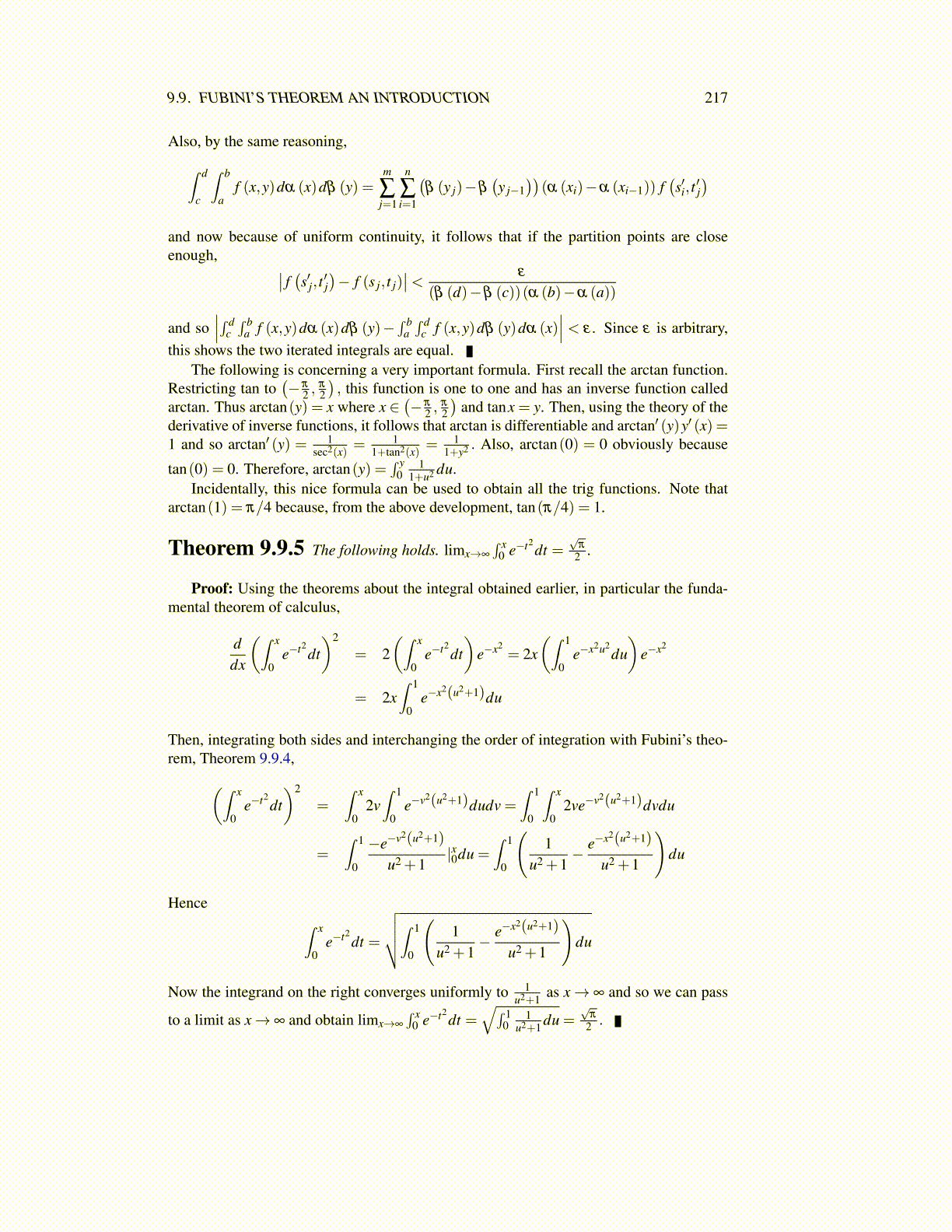
9.11. EXERCISES 217
5. In the case where F (x) = x, define a “left sum” as ∑nk=1 f (xk−1)(xk− xk−1) and a
“right sum”, ∑nk=1 f (xk)(xk− xk−1) . Also suppose that all partitions have the prop-
erty that xk − xk−1 equals a constant, (b−a)/n so the points in the partition areequally spaced, and define the integral to be the number these right and left sums getclose to as n gets larger and larger. Show that for f given in 9.6,
∫ x0 f (t) dt = x if
x is rational and∫ x
0 f (t) dt = 0 if x is irrational. It turns out that the correct answershould always equal zero for that function, regardless of whether x is rational. Thisillustrates why this method of defining the integral in terms of left and right sums istotal nonsense. Show that even though this is the case, it makes no difference if f iscontinuous.
6. The function F (x) ≡ ⌊x⌋ gives the greatest integer less than or equal to x. ThusF (1/2) = 0,F (5.67) = 5,F (5) = 5, etc. If F (x) = ⌊x⌋ as just described, find∫ 10
0 xdF. More generally, find∫ n
0 f (x)dF where f is a continuous function.
7. Suppose f is a bounded function on [0,1] and for each ε > 0,∫ ‘1
εf (x)dx exists. Can
you conclude∫ 1
0 f (x)dx exists?
8. A differentiable function f defined on (0,∞) satisfies
f (xy) = f (x)+ f (y) , f ′ (1) = 1.
Find f and sketch its graph.
9. Does there exist a function which has two continuous derivatives but the third deriva-tive fails to exist at any point? If so, give an example. If not, explain why.
10. Suppose f is a continuous function on [a,b] and∫ b
a f 2dF = 0 where F is a strictlyincreasing integrator function. Show that then f (x) = 0 for all x. If F is not strictlyincreasing, is the result still true?
11. Suppose f is a continuous function and∫ b
a f (x)xndx = 0 for n = 0,1,2,3 · · · . Showusing Problem 10 that f (x) = 0 for all x. Hint: You might use the Weierstrass ap-proximation theorem.
12. Here is a function: f (x) =
{x2 sin
(1x2
)if x ̸= 0
0 if x = 0Show this function has a deriva-
tive at every point of R. Does it make any sense to write
∫ 1
0f ′ (x)dx = f (1)− f (0) = f (1)?
Explain.
13. Let f (x) ={
sin( 1
x
)if x ̸= 0
0 if x = 0. Is f Riemann integrable with respect to a continu-
ous integrator on the interval [0,1]? Note that this function is not piecewise continu-ous because the limit from the right at 0 does not exist.